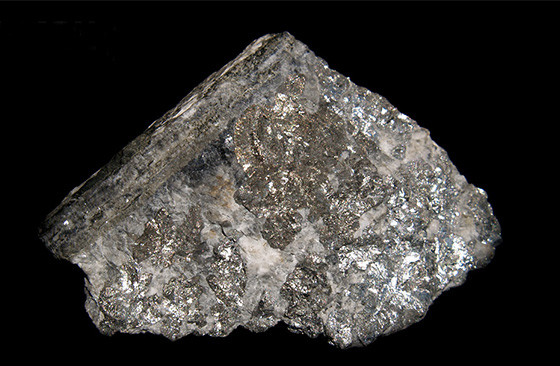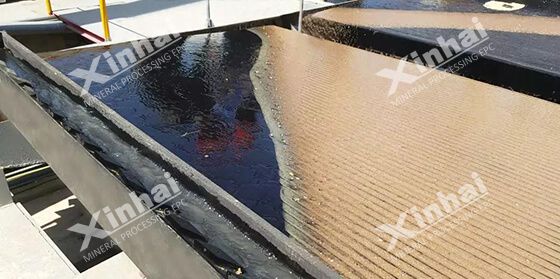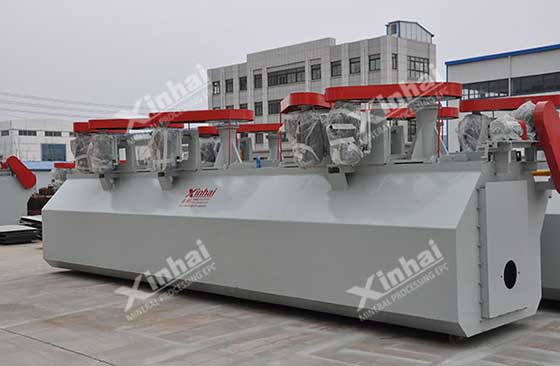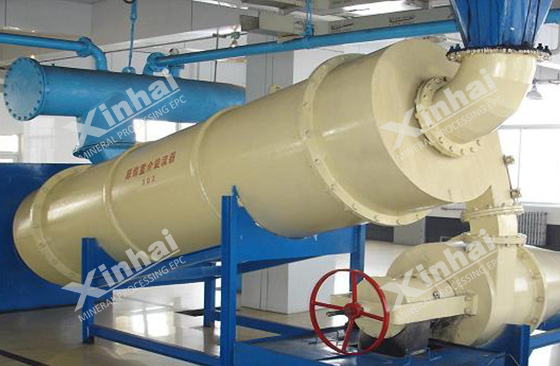
As a rare mineral, antimony ore is widely used in many fields, such as batteries, catalysts, etc. In order to meet market demand, high-purity antimony concentrate needs to be selected from a large amount of ore. By selecting appropriate antimony ores beneficiation technology, the extraction rate of antimony can be increased, thereby reducing production costs. When choosing a separation method for antimony ores, it is necessary to consider the physical and chemical properties such as ore type, mineral structure and composition, and also consider the content of valuable components in the ore and the economic benefits of mineral processing. The antimony ore beneficiation methods commonly used in actual production are mainly divided into hand selection, gravity separation, heavy media beneficiation and flotation processes. The following is a detailed introduction to these antimony ore beneficiation methods to help you better understand antimony beneficiation.

The manual selection method is mainly based on the color, luster and shape of antimony-containing minerals and gangue minerals in antimony ores. Although the hand separation method is relatively primitive and requires high labor intensity, it is still of great significance for antimony ore beneficiation. Antimony minerals often exist in the form of coarse monomer crystals or massive aggregate crystals. The hand selection method can be used to select higher-grade massive antimony concentrates from the ores. At the same time, a large amount of waste rock can be directly discarded to improve the quality of the selected raw ore. Because the manual separation method can reduce the production cost and energy consumption of mineral processing, it is widely used in mineral processing plants. Because the mud content in raw ore is high, it is necessary to set up a washing operation before hand selection.

Gravity separation technology can be applied to most antimony ores concentrators because antimony ore has high density and coarse particle size, making it easy to separate gangue minerals by gravity separation. Gravity separation technology can be applied to the separation of single antimony sulfide ores, and can also be used to process sulfide-oxidation mixed antimony ores. Gravity separation technology is low-cost and can select a large number of qualified concentrates in a coarser particle size range, so antimony ores concentrators often use gravity separation to process antimony ores. Although gravity separation technology cannot directly select qualified antimony concentrate, it can be used as a pre-selection operation for antimony ore flotation operations, and is especially suitable for the main beneficiation method of antimony oxide ores.
Heavy media beneficiation is a pre-selection operation for antimony ores. Except for antimony ores containing geode structures, heavy media beneficiation technology can be used. The selection of weighting agent, preparation and recovery of media will all affect the effectiveness of heavy media beneficiation technology.

Flotation is a commonly used beneficiation method for antimony minerals. Because antimony sulfide minerals are easily floatable minerals, the flotation method can be used to improve the quality of the ore. Stibnite flotation often uses lead salt as an activator. Copper salt or lead salt can also be used, and then a collector is used for flotation. Commonly used collectors include dixanthate, shale oil and ethyl sulfide mixtures. Pine alcohol oil and No. 2 oil are commonly used foaming agents. For difficult-to-float ores such as antimony oxide ore, a single flotation process is usually used for a single stibnite. For sulfide-oxidation mixed antimony ores, coarse-grained minerals are treated by gravity separation, while fine-grained minerals are treated by flotation or gravity separation + flotation combined process. Because antimony oxide ore is a refractory ore, it is difficult to recover concentrate through flotation treatment. When the antimony content in the oxide ore exceeds a certain proportion, reduction smelting is usually performed directly to extract metallic antimony without any beneficiation treatment. For fine-grained oxidized ore or refractory oxidized ore, the ore is first reduced to metallic antimony, and then processed using conventional flotation methods. This process requires adding a chlorinating agent and heating in the presence of a solid reducing agent, so that the antimony in the ore is precipitated in the form of chloride and adsorbed on the reducing agent coal particles. The antimony chloride is then reduced to metallic antimony using hydrogen. Since the generated antimony metal is easy to float, it can be ground first and then floated out using conventional flotation methods.

The above is a brief introduction to antimony ore beneficiation methods. After beneficiation treatment, higher-grade antimony concentrate can be obtained. After further processing, higher-purity antimony compounds can be extracted, which can then be used in industrial fields such as electronics, ceramics, and glass. With the advancement of science and technology and industrial development, the demand for antimony continues to increase. In order to meet the growing demand, more efficient and environmentally friendly antimony ore beneficiation technology and equipment are continuously researched and developed to improve the utilization rate of antimony ore resources, ore beneficiation recovery rate and purity while protecting environmental resources.
To find out more about our products and solutions, please fill out the form below and one of our experts will get back to you shortly.